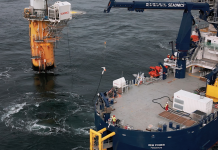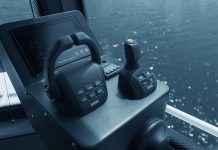Today, more than 1,000 wind Lidars of all types are being used globally for wind energy applications alone — a number that has roughly doubled in the past three years. As a general trend, Lidars have been adopted quite rapidly by the wind energy industry. We estimate that at least 80 percent of large wind farm developers and operators in North America are now utilizing wind Lidars within their businesses. Despite the maturation and widespread use of this technology in the wind sector, however, we continue to hear numerous misconceptions about it.
 SELECTING THE RIGHT LIDAR TECHNOLOGY
SELECTING THE RIGHT LIDAR TECHNOLOGY
Lidars are used for a variety of purposes, including commercial wind resource assessment, power performance testing, turbine output optimization, and calibration of wind forecast and turbine wake models.
Selecting the right remote sensing tool (ground-based, nacelle-mounted, vertically profiling, 3D scanning, etc.) depends on the particular type of application and benefits that are needed. There are a host of remote sensing products available to the wind energy industry today; they are not interchangeable, and they serve a wide range of applications at a variety of price points. For instance, Lidar and Sodar are fundamentally different technologies, and industry acceptance of Lidar specifically seems more than ever to be weighted towards particular Lidar types and brands rather than to all such devices for sale with “Lidar” in their name. The lesson, as always, is to do your own research and consult unbiased, independent experts when considering the acquisition of a Lidar system for wind energy purposes.
Lidars are not a substitute for met masts — It is important to know that ground-based Lidars can rarely reduce the duration of a pre-construction wind resource assessment (WRA) campaign, and they should not be expected to replace met towers in WRA any time soon. Lidars are deployed in concert with met towers as a means to reduce vertical (shear) and horizontal (topographic) measurement and resulting energy estimation uncertainty. Met towers still provide an economical (especially in the Americas), well-understood, and widely trusted measurement method with built-in redundancies, while Lidars are easy to relocate within projects and between projects. Both met towers and Lidars have unique advantages that make them likely to serve as complements for years to come.
Power performance testing — With regard to power performance testing, some Lidars have proven to be very useful. Forthcoming revisions to the IEC 61400-12-1 standard on power performance testing will codify the use of remote sensors for this purpose for the first time, as a complement to short masts in simple terrain sites for the calculation of rotor equivalent wind speed (REWS). That said, Lidars are already being used in many power performance tests — some of them contractually based and others for operational assessment purposes only. Many savvy wind farm operators have discovered that operational power curve testing is a worthwhile and cheap investment compared to undertaking a formal IEC test, and it may yield similar if not more valuable results.
Decreasing fatigue loads — Contrary to general belief, the majority of nacelle-mounted Lidars installed today are not actually used to control the turbines they are installed on. Many turbine OEMs are expected to incorporate Lidar technology into future turbine designs to decrease fatigue loading and therefore drive large reductions in material costs. Permanent installation of Lidars on already operating turbinesfor control purposes, however, may not deliver as much benefit. The primary benefits of retrofitted nacelle Lidars are realized within a short period of installation: accurate turbine performance assessment and the detection and correction of suboptimal settings in yaw, pitch, etc.
A COST-EFFICIENT SOLUTION TO LOWER THE COE
Lidar systems are nowadays available at a wide range of price points. Generally speaking, there is a good correlation between Lidar price and level of performance and industry acceptance. Even the most expensive Lidars will provide a highly positive return-on-investment if they are used smartly, and the ROI will often be a lot quicker than for lower cost systems due to greater capabilities and higher industry acceptance. When the cost of purchasing tall met towers is considered along with the cost of relocating them multiple times, the purchase of a highly accurate and robust Lidar system (located either on the ground or a turbine nacelle) appears as a very sound investment by comparison. Plain and simple, Lidars allow the wind energy industry to understand, characterize, and harness its own fuel source with more certainty and intelligence than ever before. Used properly, they also lessen the overall cost of wind farm development and operation.
Bankability — Certain ground-based Lidars are fully “bankable” for pre-construction wind resource assessments, with independently assessed measurement uncertainties on par with those of industry-standard, calibrated cup anemometry. It is important to assess the relative bankability of a specific Lidar system rather than assume that all systems are equivalent in this regard. Furthermore, bankable data can only be collected when the Lidar is used in a proper manner, following best practice guidelines. Just as a met tower with improper placement or configuration will provide low quality data, so will a Lidar sited or configured incorrectly.
 ROBUST AND EASY TO DEPLOY
ROBUST AND EASY TO DEPLOY
Low power consumption — Ground-based Lidars have often been wrongly accused of consuming a lot of power. Many assume that they require bulky, fossil fuel-burning, off-grid power supplies with high maintenance and refueling costs. However, ground-based Lidars like the WINDCUBE v2 actually consume very little power most of the time (45 W nominal), and they are relatively easy to power off-grid with PV panels and batteries alone.
In very cold and/or cloudy environments, different solutions might be recommended including propane fuel cell power, which operates quietly and very efficiently. That said, our customers have deployed WINDCUBEs as far north as central Ontario, Canada, on 100 percent PV solutions with good success. This is not to say that all ground-based Lidars have low power consumption and can be practically powered by PV. It is important to consider the potential power supply sizing and cost as part of the overall cost of ownership of a ground-based Lidar, as even small differences in power consumption can lead to large differences in power supply system design, service, or refueling intervals.
A high-end technology designed for the outdoors — While wind Lidars are highly technical systems as a general rule, most are actually quite easy to use and only a day or less of training is required to convert a new user into a highly competent one. This is not to say that all Lidars are easy to use; there are exceptions to every rule, and in this case, the exceptions are generally older vintage systems and newer systems that scan in three dimensions. 3D Scanning Lidars have unlocked amazing new potential in wind measurement, but they also require significant expertise on the hardware and data analysis side.
In addition, commercial Lidars are fairly robust devices, no less so than other ruggedized, high-end electronics designed to work outdoors. We advise our customers to treat their wind Lidars like expensive digital cameras — with proper care, but without fear.
— Source: Renewable NRG Systems



























